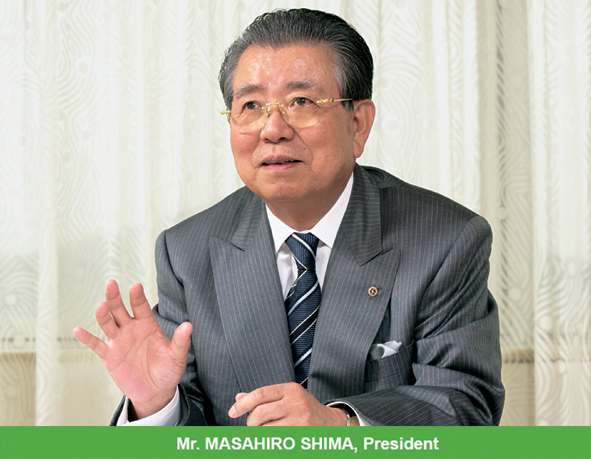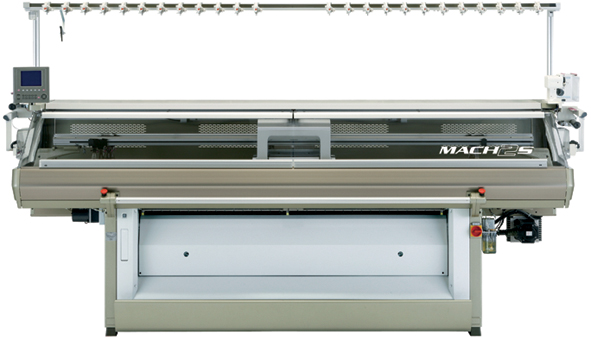 Computerized flat knitting machine manufacturer Shima Seiki of Wakayama, Japan, celebrates its 50th anniversary this year. For such a technology-driven company, this is not only an occasion to celebrate a milestone but an opportunity for reflection and self-improvement as well.
Computerized flat knitting machine manufacturer Shima Seiki of Wakayama, Japan, celebrates its 50th anniversary this year. For such a technology-driven company, this is not only an occasion to celebrate a milestone but an opportunity for reflection and self-improvement as well.
This also comes at a time when the knitting industry is similarly experiencing a turning point. Having taken on the role of the world’s garment manufacturing center, China, now with its higher wages, shortage of labor and slow lead times, has not quite lived up to the initial expectations placed upon it as a sustainable centralized global mega factory. Add to that the rapidly rising demand in domestic consumption, and a production shortage is inevitable.
Caught off-guard, many in the industry realize that change is critical, but most are slow to react. One thing is clear: The knitting industry cannot sustain itself in its current state for very long. How individual companies perform in this upcoming ‘New Era of Knitting’ depend entirely on their ability to rethink the status quo, complemented by their technological capability.
To make matters worse, the cost of manufacturing knitwear has plunged since the introduction of inexpensive machinery to the Chinese market. The situation is especially severe for knit manufacturers of exported goods, as they are finding it more and more difficult to remain profitable. The result is diminished investment, which extinguishes any hope for further progress by the industry. This is the beginning of an unfortunate spiral of events, which the knitting industry must avoid at all cost. Shima Seiki intends to help.
 At ITMA Asia, Shima Seiki introduced new machine technology and developments in design software and demonstrated how customers can exploit them immediately in preparation for the ‘New Era of Knitting’.
At ITMA Asia, Shima Seiki introduced new machine technology and developments in design software and demonstrated how customers can exploit them immediately in preparation for the ‘New Era of Knitting’.
In these trying times, it is easy to lose sight of long-term goals in the pursuit for immediate profit. Through its exhibits, Shima Seiki reminds its customers about the value of investing in a progressive company with the true potential to revitalize and sustain knitting industries in China and Asia, and beyond.
Description of main exhibits
There is something distinctly different about Shima Seiki’s exhibits at ITMA Asia. The familiar workhorse models that currently make up the backbone of many of the world’s knit manufacturing bases, including China – NSSG, NSIG and SIR – were not present. Shima Seiki instead returned to the original ITMA tradition of launching brand-new technology. Six of the eight knitting machine models are first-time introduction in China. Six are also capable of WHOLEGARMENT knitting. More significantly, seven models featured Shima Seiki’s original SlideNeedle.
Also shown for the first time were a compact version of the popular SIP-160F2 textile printing machine as well as the latest version of its all-in-one 3D design system SDS-ONE APEX3 with brand new functions. True to the company tradition, these products represented technology that is unavailable elsewhere.
Pioneered by Shima Seiki, WHOLEGARMENT knitting is the world’s first “complete garment” production method. Whereas knitwear is normally produced by knitting body panels and sleeves separately and sewing them together, WHOLEGARMENT knitwear can be produced entirely on the knitting machine without the need for linking or sewing.
SlideNeedle is a new type of knitting needle developed by the company to replace the conventional latch needle in certain applications. A slider mechanism replaces the conventional latch, expanding possibilities in knit and transfer, with increased number of knitting techniques, wider gauge range, higher quality fabrics, better efficiency and the ability to support a variety of production methods, including shaping, integral knitting and WHOLEGARMENT production.